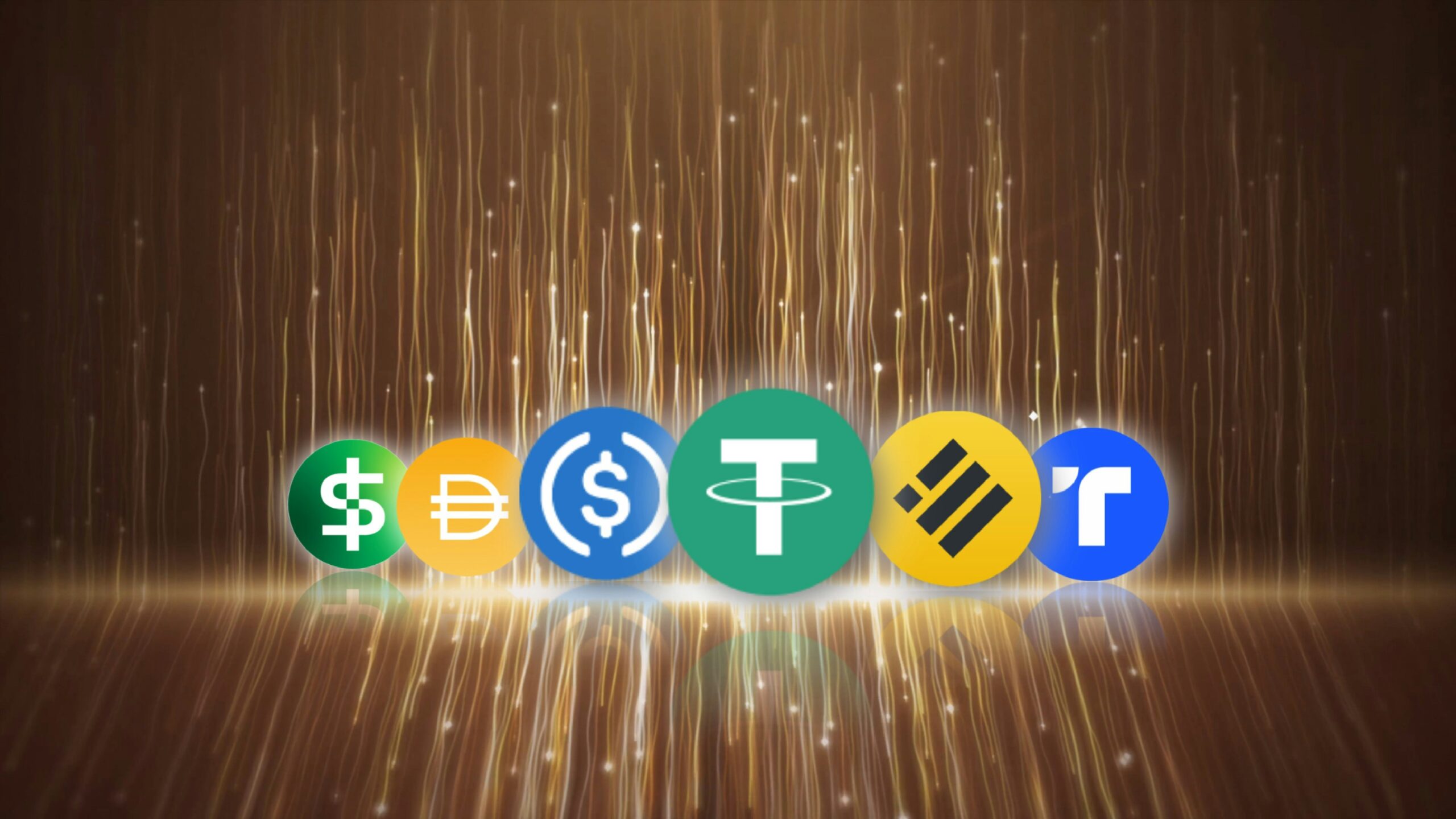What Are Stablecoins?
Stablecoins are a category of cryptocurrencies designed to maintain a fixed value relative to a specific asset or basket of assets, providing a level of stability that is often not found in traditional cryptocurrencies like Bitcoin or Ethereum. These digital currencies are particularly relevant in the cryptocurrency ecosystem, as they serve as a bridge between the highly volatile world of cryptocurrencies and the more stable traditional financial systems. They usually achieve price stability by being pegged to reliable assets such as fiat currencies including the US dollar, commodities like gold, or even other cryptocurrencies.
Stablecoins’ unique characteristics set them apart from their more volatile counterparts. Being tied to tangible assets reduces the risks associated with price fluctuations, making them an attractive option for investors and users. Their structured nature allows for greater predictability in value, facilitating transactions and enabling everyday use cases such as payments, remittances, and savings, without the fear of rapid depreciation that could accompany investments in more volatile digital currencies.
One of the main benefits of using stablecoins is the increased liquidity they offer. Users can quickly convert stablecoins back to their original fiat currency or other cryptocurrencies with minimal friction. This ease of transfer encourages wider adoption and ensures that individuals and businesses can efficiently utilize digital assets without facing the common barriers present in less stable cryptocurrencies. They can also streamline international transactions, offering faster and cheaper alternatives to traditional banking systems, which often incur high fees and long processing times.
In summary, stablecoins play a crucial role in the cryptocurrency landscape by providing a reliable means of conducting transactions while maintaining a stable value. Their unique characteristics and benefits position them as viable alternatives to traditional cryptocurrencies, making them an increasingly popular choice for users in today’s digital economy.

Types of Stablecoins
They can be categorized into three main types based on their underlying collateralization: fiat-collateralized stablecoins, crypto-collateralized stablecoins, and algorithmic stablecoins. Each of these categories serves distinct purposes in the financial ecosystem, presenting unique advantages and challenges.
Fiat-collateralized stablecoins are pegged to a traditional currency, such as the US dollar or the Euro, and are backed by reserves of that fiat currency. For example, Tether (USDT) and USD Coin (USDC) are widely recognized fiat-collateralized stablecoins.
These stablecoins are designed to maintain a stable value by ensuring that each token is backed by a corresponding amount of fiat currency held in reserve. The primary advantage of this type is its price stability, which makes it suitable for transactions and remittances. However, concerns about the transparency and security of the reserve holdings can pose disadvantages.
Crypto-collateralized stablecoins, on the other hand, are backed by other cryptocurrencies rather than fiat currencies. DAI, for instance, is a popular crypto-collateralized stablecoin, which relies on the value of Ether (ETH) and other digital assets stored in smart contracts. The collateral is over-collateralized to absorb price volatility in the crypto market. While this type offers advantages such as a decentralized nature and reduced reliance on traditional banking systems, it can be subject to greater price fluctuations, requiring substantial adjustments in collateral to maintain stability.
Finally, algorithmic stablecoins use algorithms and smart contracts to control their supply and maintain their peg at a target price. They are not backed by any collateral. One example is Ampleforth (AMPL), which adjusts its supply based on demand. While these stablecoins can be highly innovative and potentially less vulnerable to regulation, they often face challenges maintaining their peg during market turmoil, resulting in potential instability.
The Role of Stablecoins in the Financial Ecosystem
Stablecoins have emerged as a pivotal component of the financial ecosystem, serving as a bridge between traditional finance and the rapidly evolving world of cryptocurrency. Their primary feature—price stability—makes them an attractive option for a variety of financial applications. This stability fosters greater trust and reliability, which is essential for users in decentralization finance (DeFi) applications, where volatility can significantly impact users’ behavior and confidence.
In the realm of international remittances, remittances enable fast and cost-effective transfers of value across borders. Traditional methods of money transfer often involve high fees and delays, which can hinder financial inclusion for many individuals. By utilizing stablecoins, senders can benefit from lower transaction costs and instant settlements, ultimately facilitating a more inclusive financial landscape for the unbanked population. This democratization of access can encourage economic participation among those previously excluded from the financial system.
They also present an opportunity for traditional financial institutions to engage with the cryptocurrency market. Banks and other financial institutions can use these digital assets as a means of offering innovative services to their customers, creating new revenue streams while adapting to the challenges posed by digital currencies. Integrating stablecoins into their operations allows these institutions to remain competitive in a landscape increasingly characterized by the influence of DeFi applications.
However, their rise has not come without challenges. Regulatory frameworks around the world are struggling to oversee these digital currencies due to concerns over consumer protection, financial stability, and market integrity. The implications of widespread adoption of stablecoins, therefore, go beyond the immediate financial benefits, as they require thoughtful regulation to ensure a balanced approach that encourages innovation while mitigating risks. Through careful consideration of these facets, their role in the financial ecosystem is poised to grow significantly, transforming the way institutions and individuals interact with money.

Future Trends and Challenges for Stablecoins
The future is ripe for significant transformation as they increasingly bridge the gap between traditional finance and the crypto landscape. One notable emerging trend is the integration of Central Bank Digital Currencies (CBDCs), which governments around the world are exploring to modernize monetary systems. The potential coexistence of stablecoins and CBDCs could speed up transactions, increase financial inclusion, and improve payment systems, thereby broadening the scope for monetary policy implementation. As these central bank-issued digital currencies evolve, they could shape the regulatory landscape that stablecoins must navigate.
Another critical aspect influencing its trajectory is the impact of global regulation. Regulatory clarity is essential for stablecoin adoption; as governments establish frameworks that address consumer protection, anti-money laundering, and other compliance issues, the industry could see increased institutional participation. However, overly stringent regulations can hamper growth and innovation. Therefore, collaboration between regulators and the crypto industry will be vital to ensure a balanced approach that promotes security and development.
Technological advancements also play a key role in shaping functionality. Innovations such as improved smart contracts, interoperability between blockchain networks, and decentralized finance (DeFi) applications can enhance the user experience and expand the use cases for stablecoins. These developments can help address challenges such as maintaining a stable peg during periods of market volatility, which remains a primary concern for stablecoin issuers.
Despite their promise, stablecoins face several challenges, including regulatory compliance and potential risks associated with liquidity issues and overcollateralization. As the market evolves, stakeholders must proactively address these risks to ensure the sustained success of stablecoins in the financial ecosystem. By recognizing these trends and challenges, their future could potentially lead to a more robust and adaptable financial framework.
Conclusion
Stablecoins have emerged as a vital bridge between traditional finance and the rapidly evolving world of cryptocurrencies. Their ability to provide price stability while leveraging blockchain technology makes them an essential tool for payments, remittances, and decentralized finance applications. As they continue to gain traction, they offer significant benefits, including improved financial inclusion, reduced transaction costs, and increased efficiency in global transactions.
However, their widespread adoption also brings challenges, particularly in regulatory compliance, transparency, and maintaining stability during market fluctuations. The evolving landscape of central bank digital currencies (CBDCs) and regulatory frameworks will play a crucial role in shaping the future of stablecoins.
Looking ahead, technological advancements and regulatory clarity will determine the extent to which they can revolutionize the financial ecosystem. If properly integrated and managed, they have the potential to drive innovation, enhance financial accessibility, and redefine how digital assets are used in everyday transactions.
FAQ: Stablecoins
1. What is it?
These are cryptocurrencies designed to maintain a stable value by pegging them to assets such as fiat currencies (e.g. USD), commodities (e.g. gold), or other cryptocurrencies. They provide stability in contrast to the volatility of traditional cryptocurrencies like Bitcoin or Ethereum.
2. How do they maintain their value?
- Fiat-collateralized stablecoins are backed by reserves of traditional currencies held by a central entity.
- Crypto-collateralized stablecoins use cryptocurrencies as collateral, often over-collateralized to absorb volatility.
- Algorithmic stablecoins rely on smart contracts and algorithms to control supply and maintain their peg.
3. What are the benefits of using it?
- Price stability, making them suitable for everyday transactions.
- Fast and low-cost cross-border payments compared to traditional banking systems.
- High liquidity, allowing quick conversion between cryptocurrencies and fiat.
- Integration with DeFi, enabling lending, borrowing, and other financial services.
4. What are the main types?
- Fiat-collateralized stablecoins (e.g., USDT, USDC) – backed by traditional currencies.
- Crypto-collateralized stablecoins (e.g., DAI) – backed by digital assets and managed through smart contracts.
- Algorithmic stablecoins (e.g., AMPL) – maintain stability through supply adjustments rather than collateral.
5. Are they regulated?
Regulations for stablecoins vary by country. Many governments and financial regulators are developing frameworks to ensure consumer protection, financial stability, and compliance with anti-money laundering (AML) laws. The introduction of Central Bank Digital Currencies (CBDCs) may also influence future regulations.
6. How are they used in real-world applications?
- International remittances, providing a cost-effective alternative to traditional wire transfers.
- DeFi applications, facilitating lending, staking, and yield farming.
- Everyday payments, as businesses increasingly accept stablecoins for goods and services.
- Hedging against crypto volatility, allowing traders to protect assets from price swings.
7. What are the risks?
Some potential risks include:
- Regulatory uncertainty, as governments seek to establish clear guidelines.
- Reserve transparency issues, especially for fiat-backed stablecoins that may lack proper audits.
- Algorithmic instability, where uncollateralized may lose their peg during market downturns.
- Smart contract vulnerabilities, particularly for decentralized reliant on blockchain technology.
8. How do they differ from Central Bank Digital Currencies (CBDCs)?
Stablecoins are privately issued digital assets, while CBDCs are government-issued digital versions of fiat currencies. CBDCs may be more regulated and widely adopted for national financial systems, whereas stablecoins offer more flexibility and global accessibility within the crypto market.
9. Can they be used for long-term investments?
They are primarily designed for stability and transactions, not for long-term investment growth like Bitcoin or Ethereum. However, some users stake or lend stablecoins on DeFi platforms to earn interest.
10. What does the future hold?
The future depends on regulatory developments, technological advancements, and adoption trends. With growing interest from financial institutions and governments, stablecoins could evolve to integrate with CBDCs, expand DeFi applications, and play a crucial role in global digital finance.
More about Stablecoins



